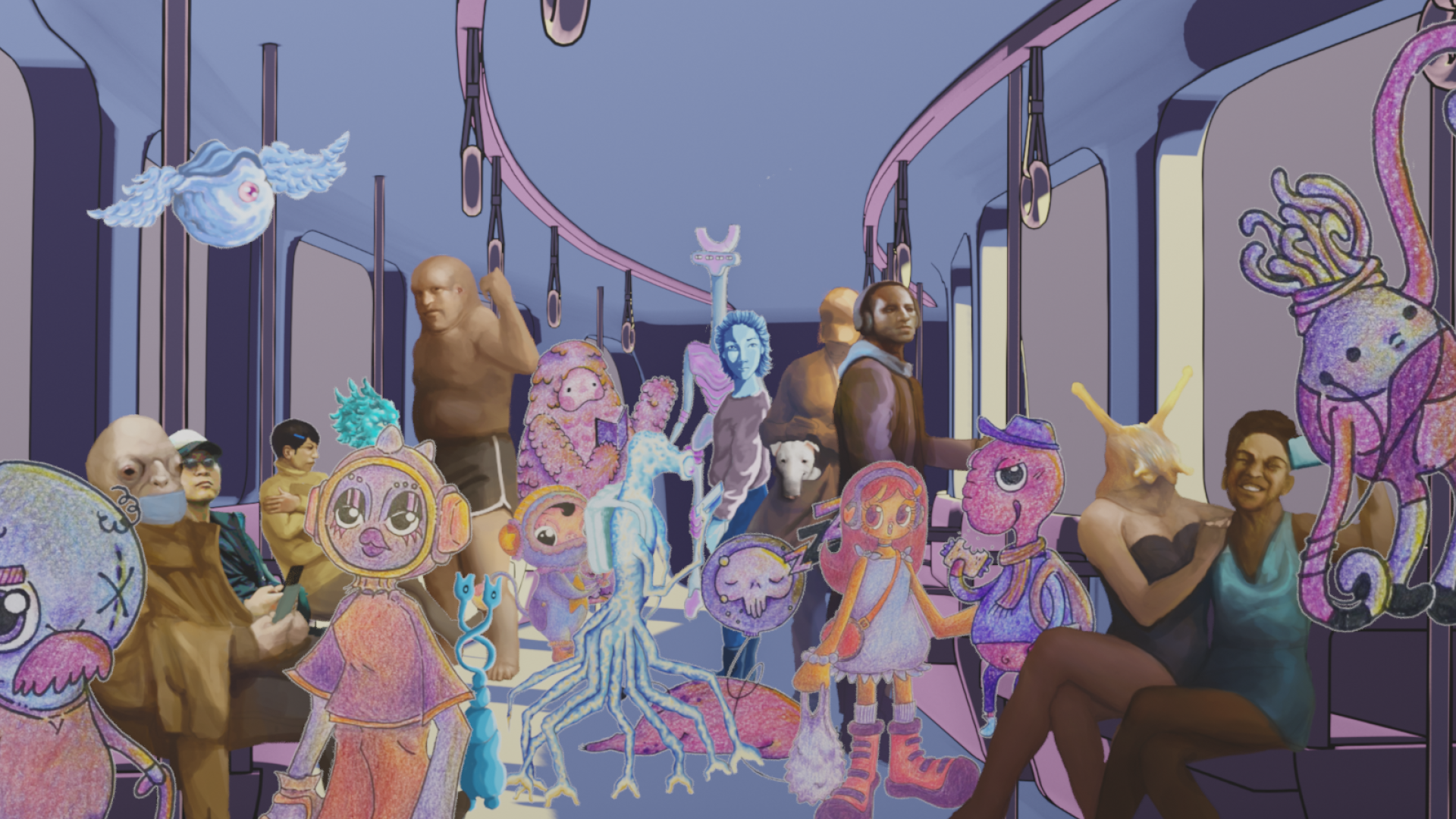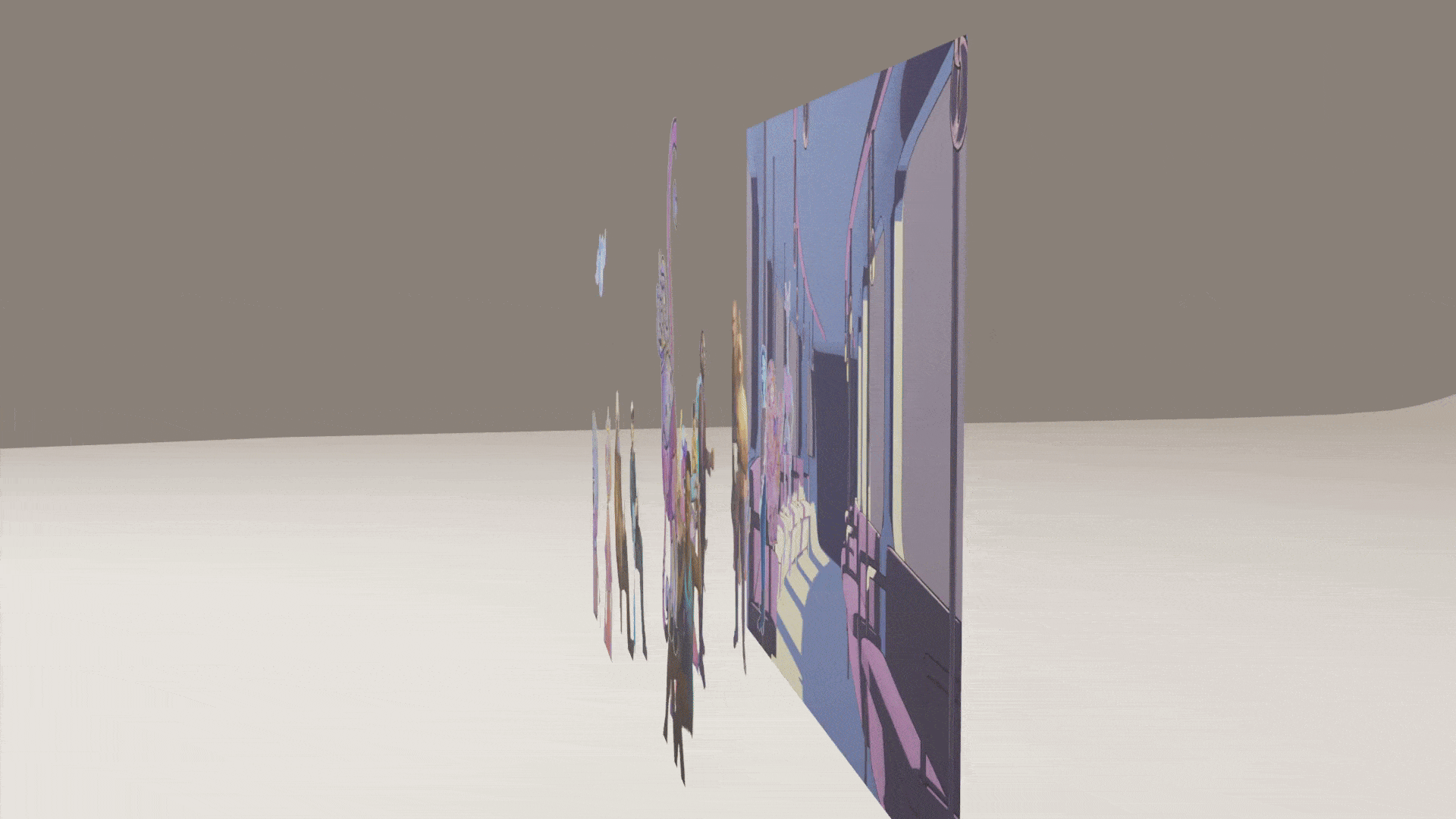↘
CLOSENESS
ACROSS
DISTANCE
4000 Miles (2)
»We are like islands in the sea, separate on the surface but connected in the deep.« – William James, American Philosopher and Psychologist
Feeling connected tethers humans to the the earth. We search for shared threads that tie us to one another as we cast our mighty nets in attempts to capture a sense of togetherness. This innate need to feel a sense of community and belonging has prompted technological advancements that help humans transcend obstacles like time and physical distances. The contemporary understanding of proximity and nearness reflects a cultural shift as community is no longer defined by place, and with technology, we are able to maintain personal contact and presence over vast distances. Existing solutions, such as messenger services and video conferencing systems, tend to focus on direct communication, primarily providing efficient and explicit exchange of information. However, social relationships require more subtle, versatile, and sensory ways of communicating and expressing emotions. (1)
The concept of closeness can be examined figuratively and metaphorically, for it encompasses the following: (A) the state of being only a short distance or separation in terms of space or time; (B) the kind of affection or intimacy in a relationship; (C) the attentive and thorough way of being (2). Within the course, students explored these different lenses through observation, creativity, and artistic production. The aim was to explore and develop concepts that enable the maintenance of meaningful social relationships across spatial distances, which drive and strengthen participation, neighborliness, cooperation and solidarity within a transcontinental community.
Feeling connected tethers humans to the the earth. We search for shared threads that tie us to one another as we cast our mighty nets in attempts to capture a sense of togetherness. This innate need to feel a sense of community and belonging has prompted technological advancements that help humans transcend obstacles like time and physical distances. The contemporary understanding of proximity and nearness reflects a cultural shift as community is no longer defined by place, and with technology, we are able to maintain personal contact and presence over vast distances. Existing solutions, such as messenger services and video conferencing systems, tend to focus on direct communication, primarily providing efficient and explicit exchange of information. However, social relationships require more subtle, versatile, and sensory ways of communicating and expressing emotions. (1)
The concept of closeness can be examined figuratively and metaphorically, for it encompasses the following: (A) the state of being only a short distance or separation in terms of space or time; (B) the kind of affection or intimacy in a relationship; (C) the attentive and thorough way of being (2). Within the course, students explored these different lenses through observation, creativity, and artistic production. The aim was to explore and develop concepts that enable the maintenance of meaningful social relationships across spatial distances, which drive and strengthen participation, neighborliness, cooperation and solidarity within a transcontinental community.
(1)
BMBF. (2021, November 26) Bekanntmachung der Richtlinie zur Förderung von Projekten zum Thema „Nähe über Distanz – Mit interaktiven Technologien zwischenmenschliche Verbundenheit ermöglichen“. Bundesministerium für Bildung und Forschung ↗
(2)
Oxford Learner’s Dictionaries. (n.d.). Closeness. In www.oxfordlearnersdictionaries.com ↗ Retrieved September 4, 2024
The short term project is part of the Virtual Global Learning Exchange (VGLE). Bridging two institutions on two continents and two time zones, it aims to promote intercultural exchange and Blended Learning, focusing on linking physical and virtual learning environments for art and design practice. The teams consist of students of different senorities from the first to the seventh semester.
The course culminated in a visual art and design exhibition ↗ at the Faculty of Design Würzburg. Take a virtual tour ↗.
The course is a cooperation of Prof. Sydney Craig ↗ (Herron) and Prof. Judith Glaser.
Winter Term 2023/24
BMBF. (2021, November 26) Bekanntmachung der Richtlinie zur Förderung von Projekten zum Thema „Nähe über Distanz – Mit interaktiven Technologien zwischenmenschliche Verbundenheit ermöglichen“. Bundesministerium für Bildung und Forschung ↗
(2)
Oxford Learner’s Dictionaries. (n.d.). Closeness. In www.oxfordlearnersdictionaries.com ↗ Retrieved September 4, 2024
The short term project is part of the Virtual Global Learning Exchange (VGLE). Bridging two institutions on two continents and two time zones, it aims to promote intercultural exchange and Blended Learning, focusing on linking physical and virtual learning environments for art and design practice. The teams consist of students of different senorities from the first to the seventh semester.
The course culminated in a visual art and design exhibition ↗ at the Faculty of Design Würzburg. Take a virtual tour ↗.
The course is a cooperation of Prof. Sydney Craig ↗ (Herron) and Prof. Judith Glaser.
Winter Term 2023/24
↘

Dinner Time
Raquel Romero, Lea Geldmacher, Taya Johnson, Madisyn Bryant
Whether it‘s a weekend brunch or a quick weeknight dinner, the benefits ofcoming Together around the table are undeniable. It strengthens our friendships, family connections and has a lot of positive effects on our wellbeing.
The magazine Dinner Time features four unique dinners from different cultures around the world. While each meal and setting is different, they all have one thing in common: they bring people together.
The magazine Dinner Time features four unique dinners from different cultures around the world. While each meal and setting is different, they all have one thing in common: they bring people together.
What food was on the table? Did each guest bring a dish? How was the Vibe of the dinner? What did they talk about? Each Team Member took photos of the dinner event and designed their own pages afterwards writing about the evening and the experience.



↘
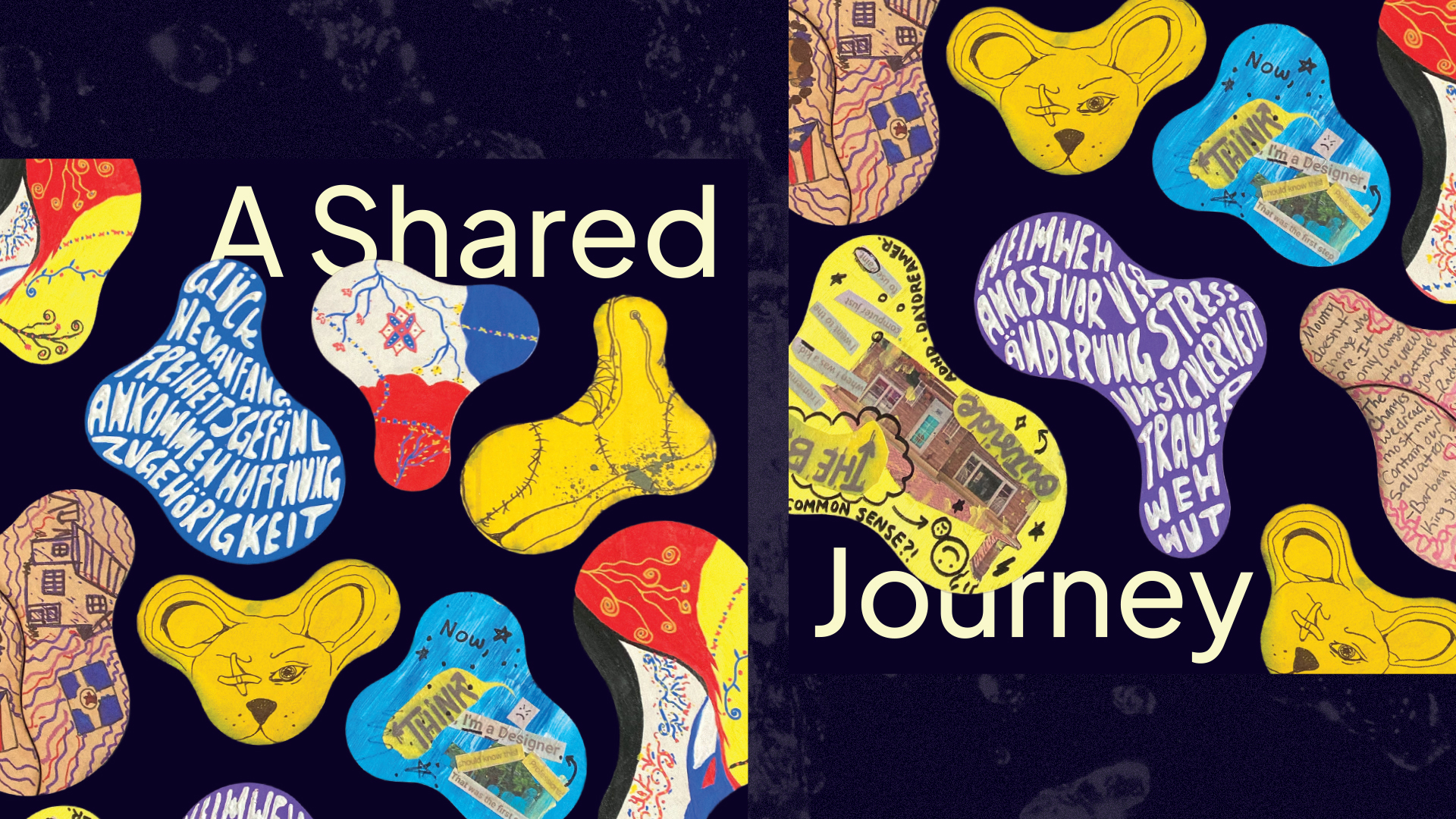
A Shared Journey
Mira Render, Isabel Leganyi, Anthony Stewart, Anastasia Gabidullina, Amberly Gonzalez
Exploring the theme ›closeness across distance‹, the project blends the literal act of ›falling into place‹ with the figurative journey of finding belonging.
Each piece reflects a unique and personal story of transition, exploring the emotional and physical journeys of moving from one place to another. As the pieces come together, they symbolize the shared experiences of navigating change, bridging cultural divides, and creating closeness despite distance.
Each piece reflects a unique and personal story of transition, exploring the emotional and physical journeys of moving from one place to another. As the pieces come together, they symbolize the shared experiences of navigating change, bridging cultural divides, and creating closeness despite distance.
Created by students from two different continents, the puzzle reflects a collective narrative of unity through collaboration and serves as both a literal mechanism and a metaphor for finding connection.


↘

Nostalgia
Celina Smidelius, Judith Beßendörfer, Sam Martinez, Kayla Evans, Jasmine Terrell
»Nostalgia is a way of connecting our past to our present, offering warmth and familiarity in a changing world.«
Our subproject, Nostalgia, revolves around the creation of a flipbook that explores the emotional depth of shared memories. Nostalgia is a powerful, universal experience that bridges generations and cultures, allowing individuals to reconnect with their past and find commonalities with others. By capturing moments that define childhood—music, outdoor play, media/TV shows, food, and the senses (smell, sight, taste, hearing, and touch)—we create a tangible representation of how memory shapes identity.
This project is rooted in the idea that nostalgia fosters human connection, even across vast distances. While modern technology enables communication, it often lacks the sensory depth needed to evoke true emotional closeness.
Our subproject, Nostalgia, revolves around the creation of a flipbook that explores the emotional depth of shared memories. Nostalgia is a powerful, universal experience that bridges generations and cultures, allowing individuals to reconnect with their past and find commonalities with others. By capturing moments that define childhood—music, outdoor play, media/TV shows, food, and the senses (smell, sight, taste, hearing, and touch)—we create a tangible representation of how memory shapes identity.
This project is rooted in the idea that nostalgia fosters human connection, even across vast distances. While modern technology enables communication, it often lacks the sensory depth needed to evoke true emotional closeness.
Through a playful and artistic approach, our flipbook highlights how simple, everyday experiences can trigger deep feelings of warmth, familiarity, and shared humanity. Each page invites the viewer to engage with textures, visuals, and themes that bring personal and collective memories to life.
By translating nostalgia into a creative medium, we aim to demonstrate its role in shaping relationships, cultural heritage, and personal reflection. Regardless of where we grew up, childhood memories hold significance, reminding us that while we may be separated by geography, we remain deeply connected through the emotions that define us.
By translating nostalgia into a creative medium, we aim to demonstrate its role in shaping relationships, cultural heritage, and personal reflection. Regardless of where we grew up, childhood memories hold significance, reminding us that while we may be separated by geography, we remain deeply connected through the emotions that define us.


↘

Pulse of Us
Anna Kremzer, Kata Kozák, Carmen González Castilla, Philip Hedges, Sam Rittenberry
Pulse of Us is an interactive project that represents the idea of emotional closeness between people across the globe. Addressing the growing presence of video surveillance, the project investigates how shared emotions can create a sense of connection.
To demonstrate its functionality, the project focuses on six core emotions: anger, happiness, sadness, surprise, fear, and disgust. Using facial recognition technology, the project captures and interprets emotional expressions, translating them into abstract visual shapes that represent emotional exchanges.
These visuals are then displayed in real-time, enabling participants to connect through shared emotions, even at a distance.
Pulse of Us explores the intersection of technology, emotion, and connection, encouraging a deeper understanding of our shared humanity.



↘
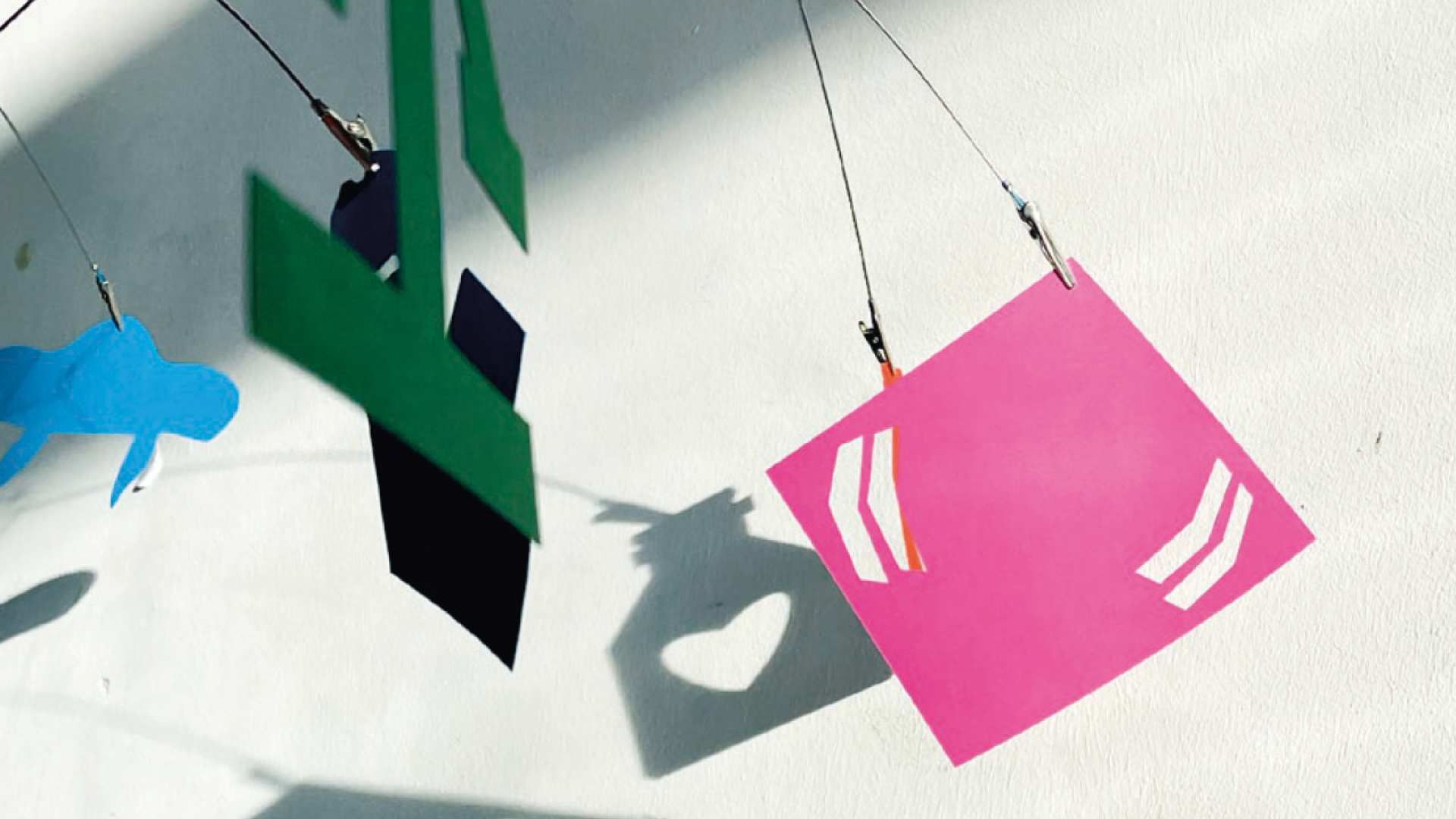
Weltschmerz
Shannon Kruse, Paula Appel, Cara Clark, Kyleigh Long, Mike Mabes
Visualizing Collective Sorrow
Weltschmerz is a german word for the experience of melancholy and weariness towards the state of the world. It refers to the emotional weight that comes from comparing the world as it is with an idealized version of how it could be. In today’s digital age, this feeling is often amplified by the constant flow of news and media, leaving many overwhelmed or disheartened by global events. In times of war, climate crisis, rising numbers of femicides, right wing politicians gaining power Weltschmerz can arise quickly.
But how do people experience Weltschmerz? What emotions does it evoke? And how do they perceive the world in its current state? This Project is an attempt to visualize Weltschmerz as collective sorrow. We asked people to choose one emoji to represent their feelings and write a short explanation why they chose this specific emoji.
Weltschmerz is a german word for the experience of melancholy and weariness towards the state of the world. It refers to the emotional weight that comes from comparing the world as it is with an idealized version of how it could be. In today’s digital age, this feeling is often amplified by the constant flow of news and media, leaving many overwhelmed or disheartened by global events. In times of war, climate crisis, rising numbers of femicides, right wing politicians gaining power Weltschmerz can arise quickly.
But how do people experience Weltschmerz? What emotions does it evoke? And how do they perceive the world in its current state? This Project is an attempt to visualize Weltschmerz as collective sorrow. We asked people to choose one emoji to represent their feelings and write a short explanation why they chose this specific emoji.
These collected responses formed the basis of our project – a mobile that brings the abstract concept of Weltschmerz into a physical, moving form. The answers are as diverse as the feeling itself. The hanging mobile shows the collected emojis translated into symbols that show Weltschmerz in all its facets – sadness and helplessness as well as feelings of hope and longing. We aim to visualize the emotional state of our time, making the intangible experience of world-weariness both visible and tangible. The result is a constantly shifting representation of collective emotions, reflecting how Weltschmerz moves through and shapes our perception of the world.
We invite you to think and explore your own experience of Weltschmerz.
We invite you to think and explore your own experience of Weltschmerz.



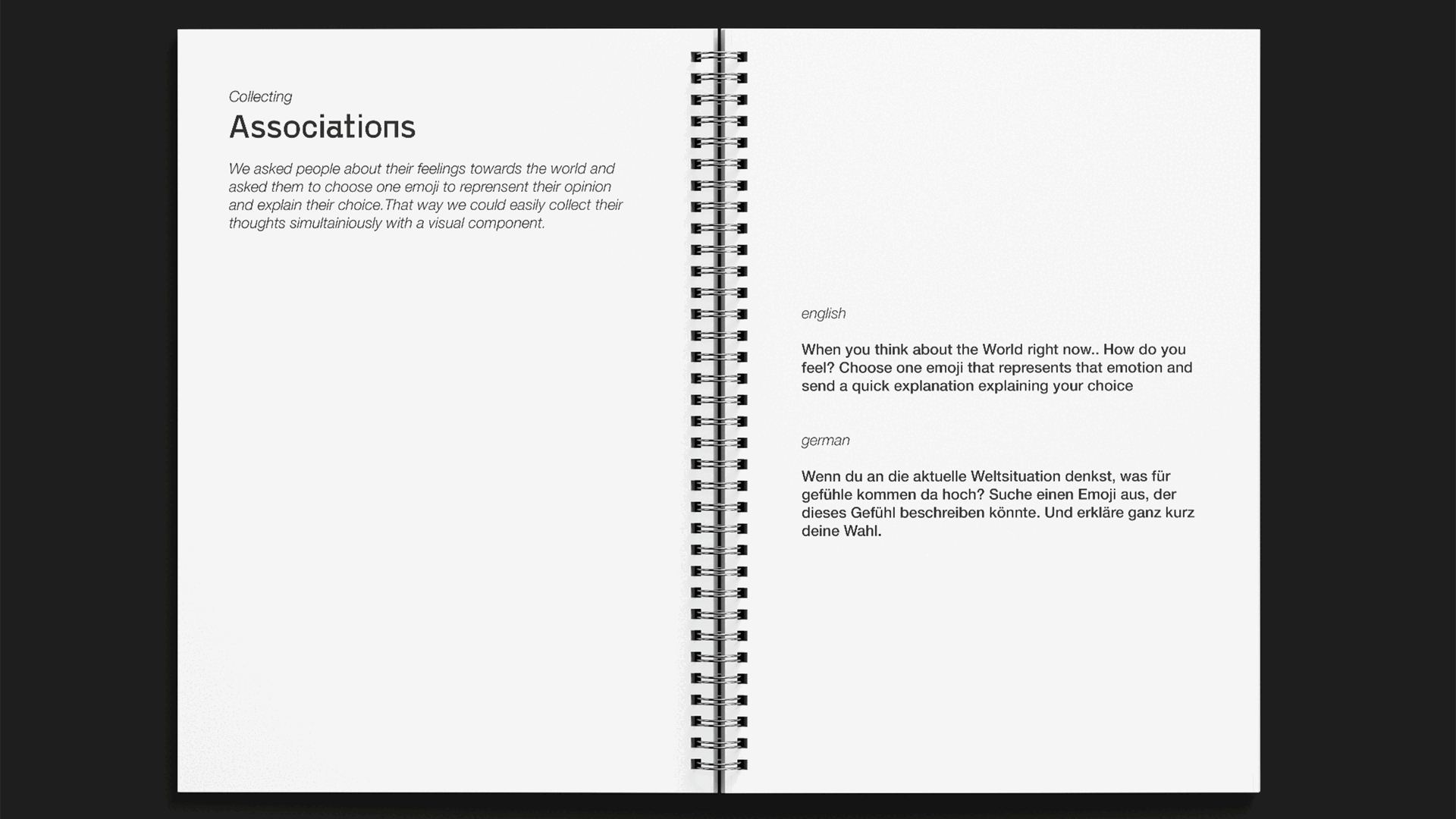
↘
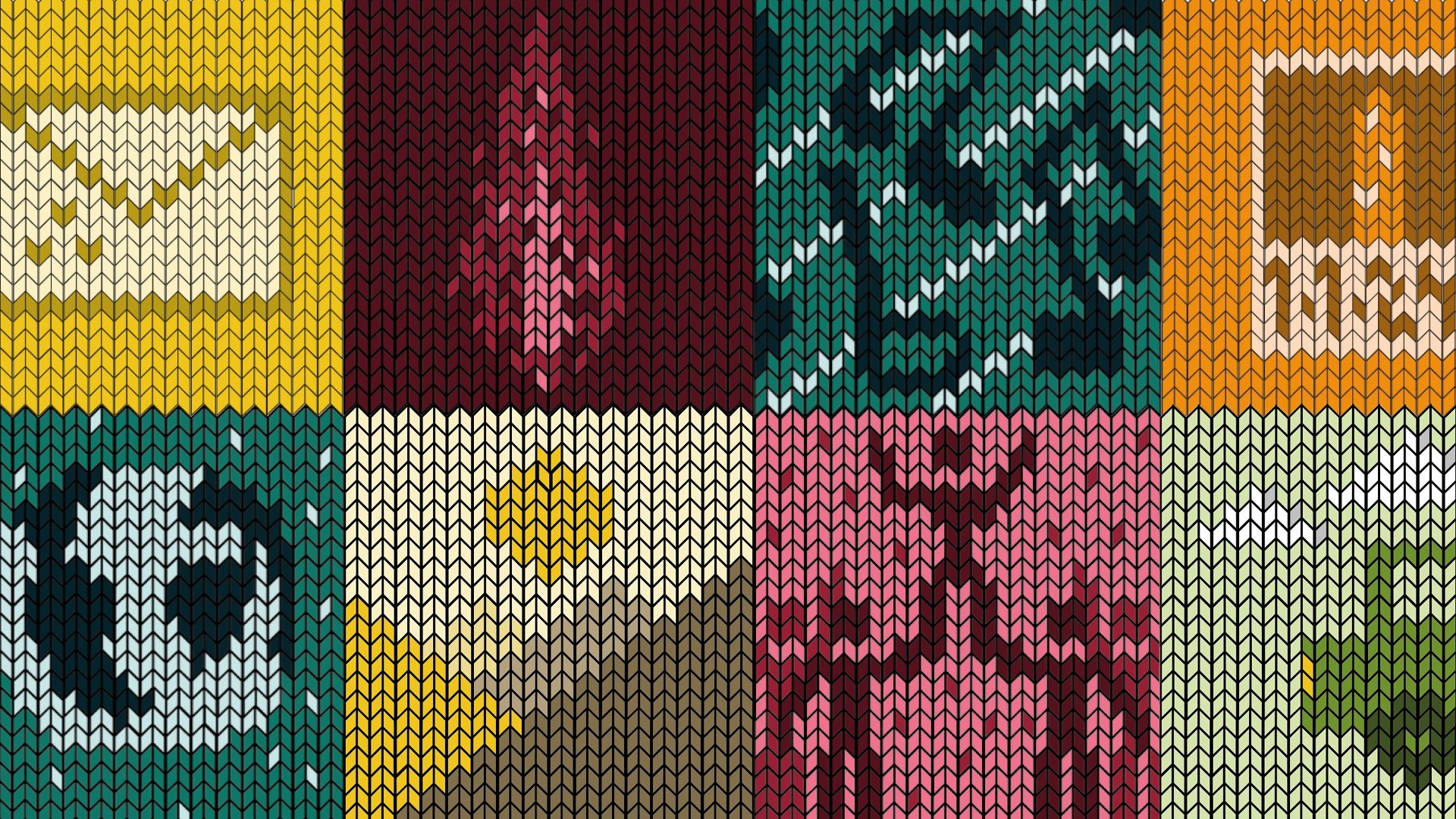
ParallelWorlds
Bawi Sul, Jordan Cornelius, Varinia Koenig, Ananda Aldonza
This project aims to reflect the importance of
memories and experiences that connect us with
others. Each square on the scarf symbolizes a
significant moment, while the colors represent
different aspects of life: pets, achievements,
love, family, childhood, and more.
The more squares the scarf has, the greater the
number of accumulated experiences, turning it
into a tangible symbol of the emotional and personal
richness of its owner. Each fragment tells a
story, highlighting the value of the connections
and moments that shape our lives.


↘

Layers of Connection
Isabella Adelt, Julia Dawn Tirol de Sousa, Isaac Chaifetz
A Sci-Fi Puzzle
Layers of Connection is a collaborative art piece created by three illustrators from different parts of the world. Like puzzle pieces, we brought together our distinct art styles—digital and analog—to create a sci-fi universe filled with genetically modified humans and creatures. The artwork consists of six acrylic plates, each layer adding depth and complexity. The first layers explore dual collaborations, where we learned to adapt and merge our ideas. The final layers bring all three styles together, forming a bustling metro scene where diverse characters coexist and interact.
Layers of Connection is a collaborative art piece created by three illustrators from different parts of the world. Like puzzle pieces, we brought together our distinct art styles—digital and analog—to create a sci-fi universe filled with genetically modified humans and creatures. The artwork consists of six acrylic plates, each layer adding depth and complexity. The first layers explore dual collaborations, where we learned to adapt and merge our ideas. The final layers bring all three styles together, forming a bustling metro scene where diverse characters coexist and interact.
This project celebrates the beauty of difference and collaboration, showing how unique perspectives can connect and build something truly meaningful. Each layer, like each artist, is essential—together creating a rich, layered story of shared creativity and empathy.
